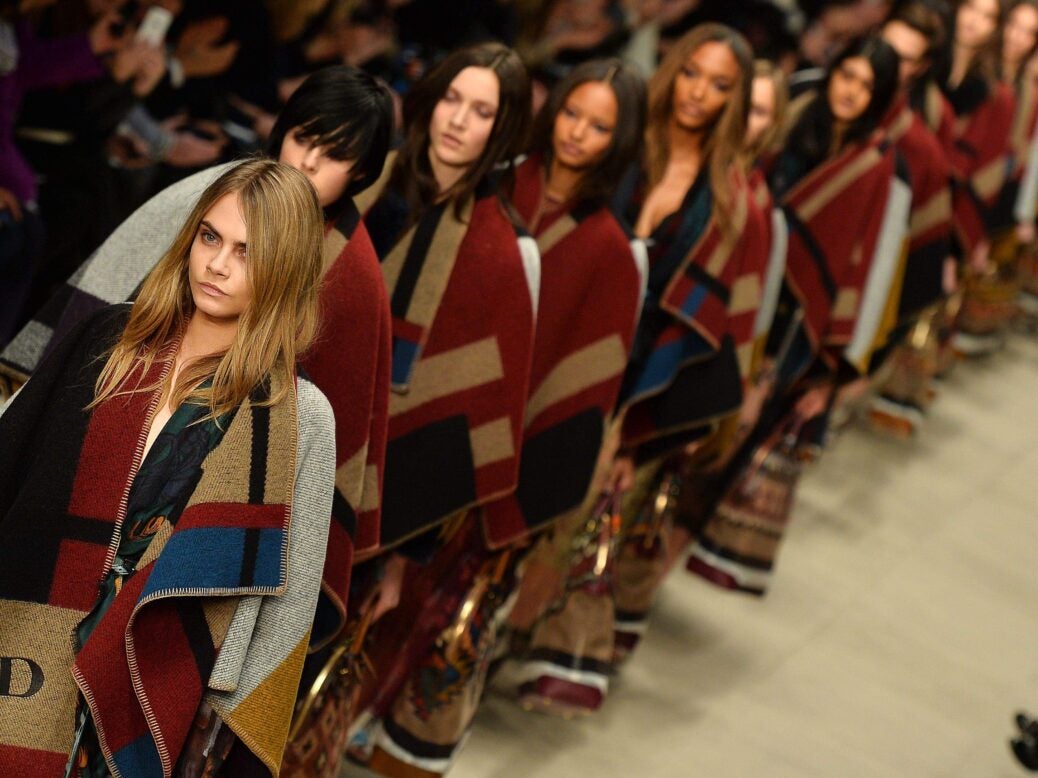
The 2017 Autumn/Winter London Fashion Week leads the way as the UK struts confidently towards a post-Brexit future, writes Emelia Hamilton-Russell
London Fashion Week, which begins today, is due to host to 85 catwalk shows and 33 events with presentations from internationally celebrated British designers including Giles Deacon (who designed Pippa Middleton’s wedding dress), Charlotte Olympia, Emilia Wickstead, ERDEM, Pringle of Scotland and Temperley London – all showcasing their latest collections.
Beginning on Friday, London’s ‘week’ opened its doors to over 5,000 guests, from international press to buyers, broadcasters, influencers and industry insiders from over 70 countries. The event, now launching its 66th edition, began in 1984 and firmly cements the UK’s reputation as a global fashion capital.
And the figures prove it: the UK fashion industry is worth £28 billion (up from £26 billion in 2013) and its exports amount to around £9 billion. All told, it represents 1 per cent of UK GDP, meaning fashion is now worth as much as agriculture to the UK economy. With everyone from emerging British talent to globally established brands strutting their stuff over the next five days, the breadth of the London Fashion Week schedule is a testament to the eclectic and innovative (not to mention profitable) British fashion industry.
Not simply a showcase to a thriving industry, the event also pays tribute to the nation’s unique cultural capital: its history, universities and even the royal family.
Among the most anticipated shows is that of Burberry – the biggest UK fashion house with a market capitalisation of £10 billion. Its trench coats, which are just as likely to be seen on the streets of Shanghai as London, still bear the rarefied ‘Made in Britain’ label. Its global headquarters is in London and the trench coats are crafted in their factory in the South-Yorkshire town of Rotherham.
Which prompts a thought – as we look to our post-Brexit future, what could the rest of us in corporate Britain and beyond learn from Burberry’s global success at selling Britishness overseas?
Asked about the secret to the brand’s global success, Christopher Bailey, creative director of Burberry for 16 years (with a two year interlude as CEO), tells the BBC: ‘I think Britishness resonates globally. You have these two quite opposite cultural associations: on the one hand we have the historic, traditional, almost Victorian values. But on the other hand we have the best art and design schools in the world, so you have this eccentric, eclectic artistry but also the history, elegance and poise of the past. That is intriguing and exiting for people from other parts of the world who want to be part of, or own a piece of, this thriving creative culture.’
Bailey adds: ‘London, and indeed the whole of the UK, is an energy hub to creative industries – we’ve got this creatively nourishing country that people want to feed off. People want to be educated here and they want to set up business here.’
It’s this sort of fierce positivity which the next five days will more than amply model: one pointy-booted stomp at a time.

Related
On Mulberry and Burberry’s route to recovery






